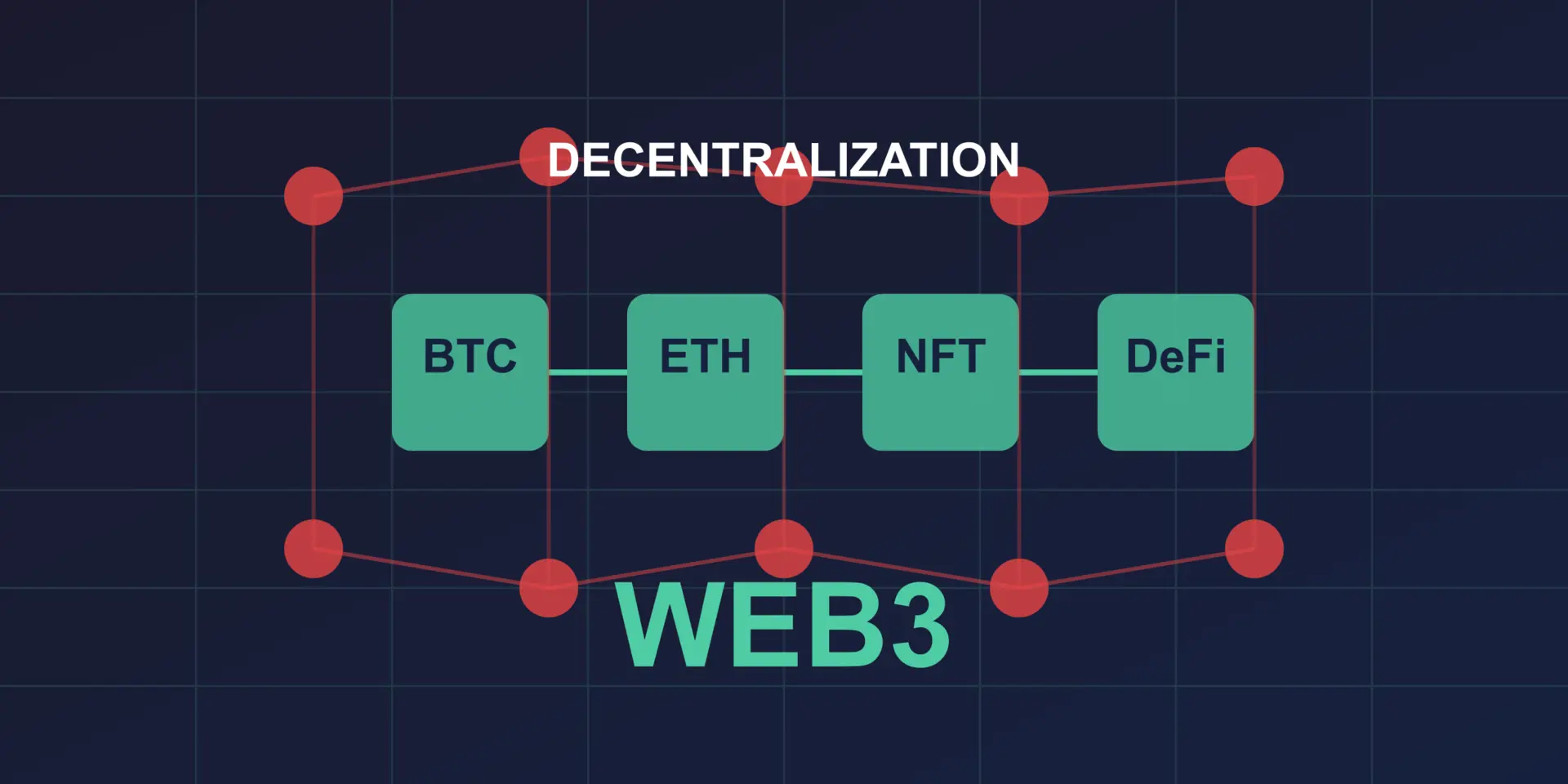The internet as we know it is undergoing a fundamental transformation. Web3, often described as the third generation of the internet, promises to give users back control over their data, value, and digital identity. Unlike earlier versions of the web, Web3 is based on decentralized technologies that can radically change how we interact with the internet.
What is Web3?
Web3 is a vision of a decentralized internet based on blockchain technology. Unlike Web1 (static websites) and Web2 (interactive social platforms controlled by corporations), Web3 aims to create an environment where users have full control over their data and digital identity.
The fundamental principles of Web3 include:
- Decentralization: Moving away from centralized servers towards distributed computer networks.
- Permissionless: Anyone can participate without needing approval from a central authority.
- Native payments: Integrated payment systems based on cryptocurrencies.
- Trustless: Eliminating the need to trust intermediaries thanks to cryptographic protocols.
- User ownership: Users own their data and digital assets.
Key Web3 Technologies
Blockchain
Blockchain forms the foundation of Web3, providing a decentralized, immutable transaction database. This technology enables the creation of distributed applications (dApps) that operate without a central point of control.
Smart Contracts
Smart contracts are self-executing agreements with conditions written directly into code. They allow for automatic enforcement of agreements between parties without the need for intermediaries.
Decentralized Applications (dApps)
DApps are applications that run on decentralized networks instead of centralized servers. Their code is open, and data is stored on the blockchain network.
Tokens and Cryptocurrencies
Tokens are an integral part of the Web3 ecosystem, enabling:
- Value transfers without intermediaries
- Participation in protocol governance (governance tokens)
- Representation of digital and real-world assets
Decentralized Finance (DeFi)
DeFi is an ecosystem of blockchain-based financial applications that enable lending, saving, and trading without traditional financial intermediaries.
Practical Applications of Web3
Finance
Transformation of financial systems by eliminating intermediaries, reducing costs, and increasing accessibility of financial services to billions of people without access to banking.
Digital Identity
Decentralized identification systems allow users to control their digital identities without dependence on corporate or government authentication systems.
Supply Chains
Increasing transparency and efficiency in supply chains by tracking products from manufacturer to consumer on an immutable blockchain ledger.
Media and Entertainment
New content monetization models that allow creators to receive compensation directly from audiences without intermediaries.
Gaming and Metaverse
Ownership of digital assets in games and virtual environments, enabling real economic value for virtual items.
Challenges and Limitations
Despite promising prospects, Web3 faces numerous challenges:
- Scalability: Current blockchain solutions have limited throughput compared to centralized systems.
- User experience: Web3 interfaces are often complicated for average users.
- Legal regulations: Regulatory uncertainty inhibits faster development and adoption.
- Energy consumption: Some blockchain consensus mechanisms, like Proof of Work, are energy-intensive.
- Resource centralization: Paradoxically, many Web3 projects show centralizing tendencies in token ownership and computing power.
The Future of Web3
Web3 is still in its early stages of development, but its potential is enormous. As technologies mature and current problems are solved, we can expect:
- Smoother integration with existing Web2 systems
- User-friendly interfaces increasing mass adoption
- Development of interoperability standards between different blockchain chains
- New business models based on decentralized architecture
Summary
Web3 is more than just technology – it’s a movement aimed at restoring the internet to its original vision as an open, democratic space accessible to all. Although challenges remain significant, the potential benefits of decentralized control, enhanced privacy, and new economic models make Web3 one of the most exciting areas of technological development at present.
The transition to Web3 won’t be immediate or complete, but the gradual evolution toward a more decentralized internet has already begun, changing how we think about digital ownership, privacy, and online interactions.



Leave a Reply